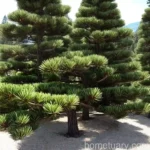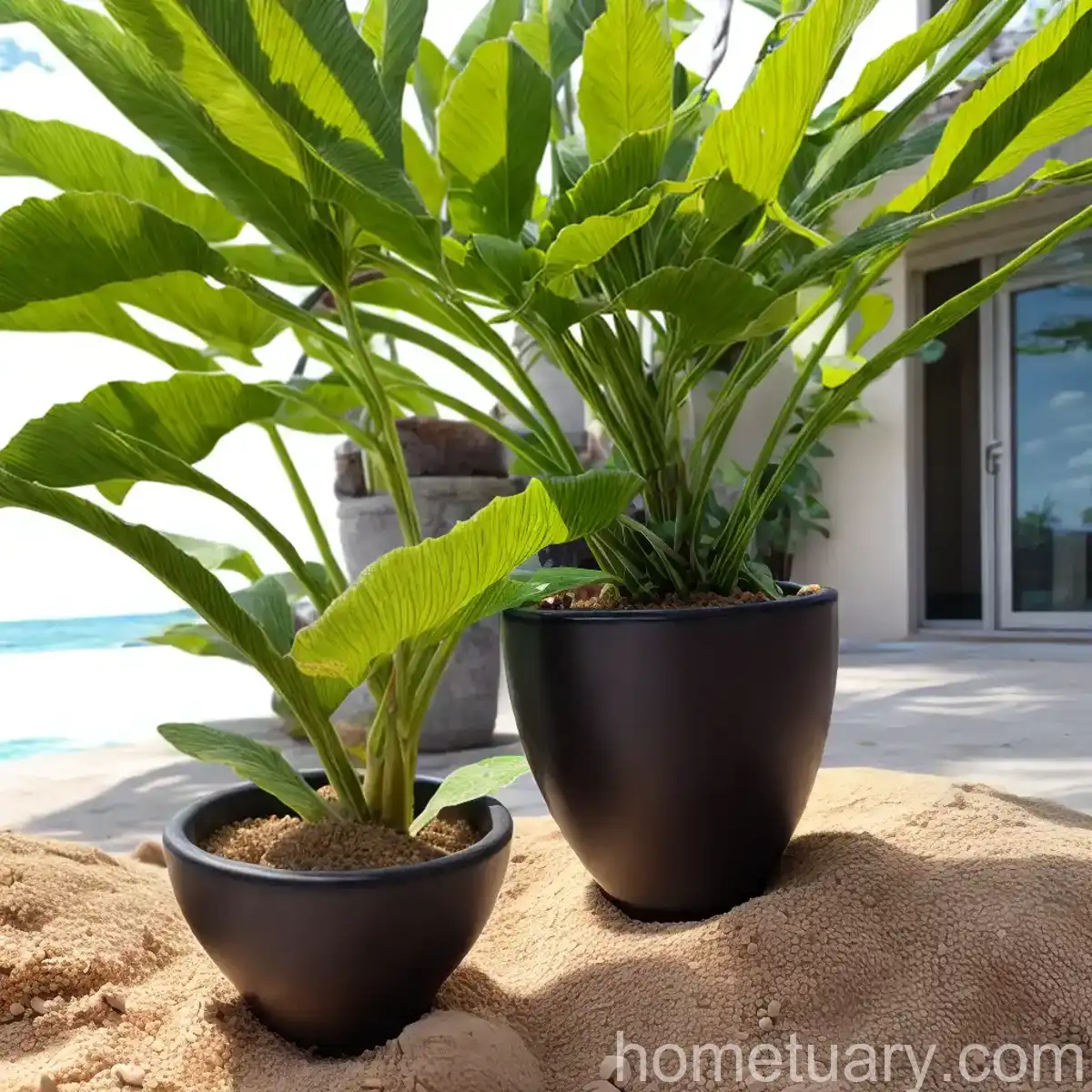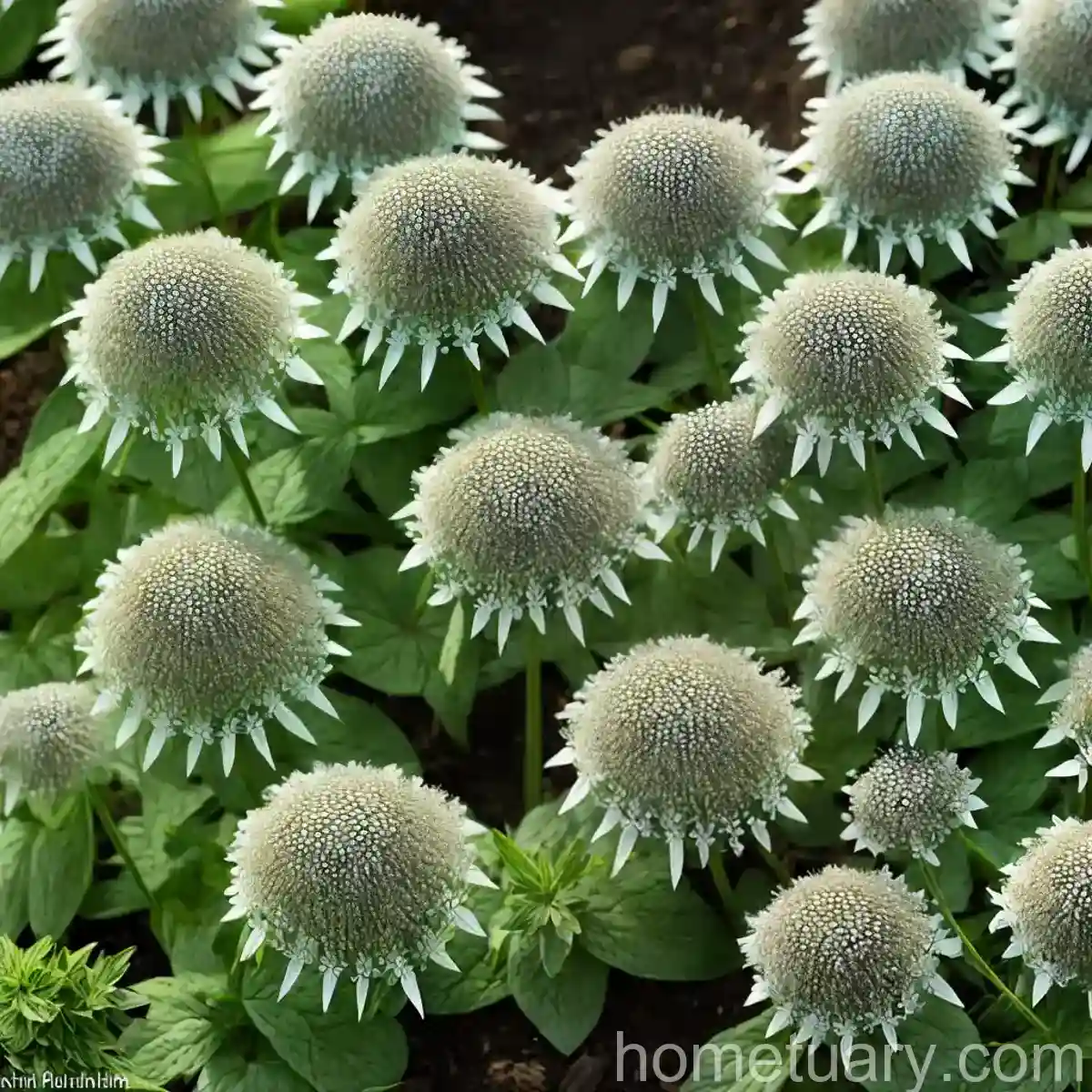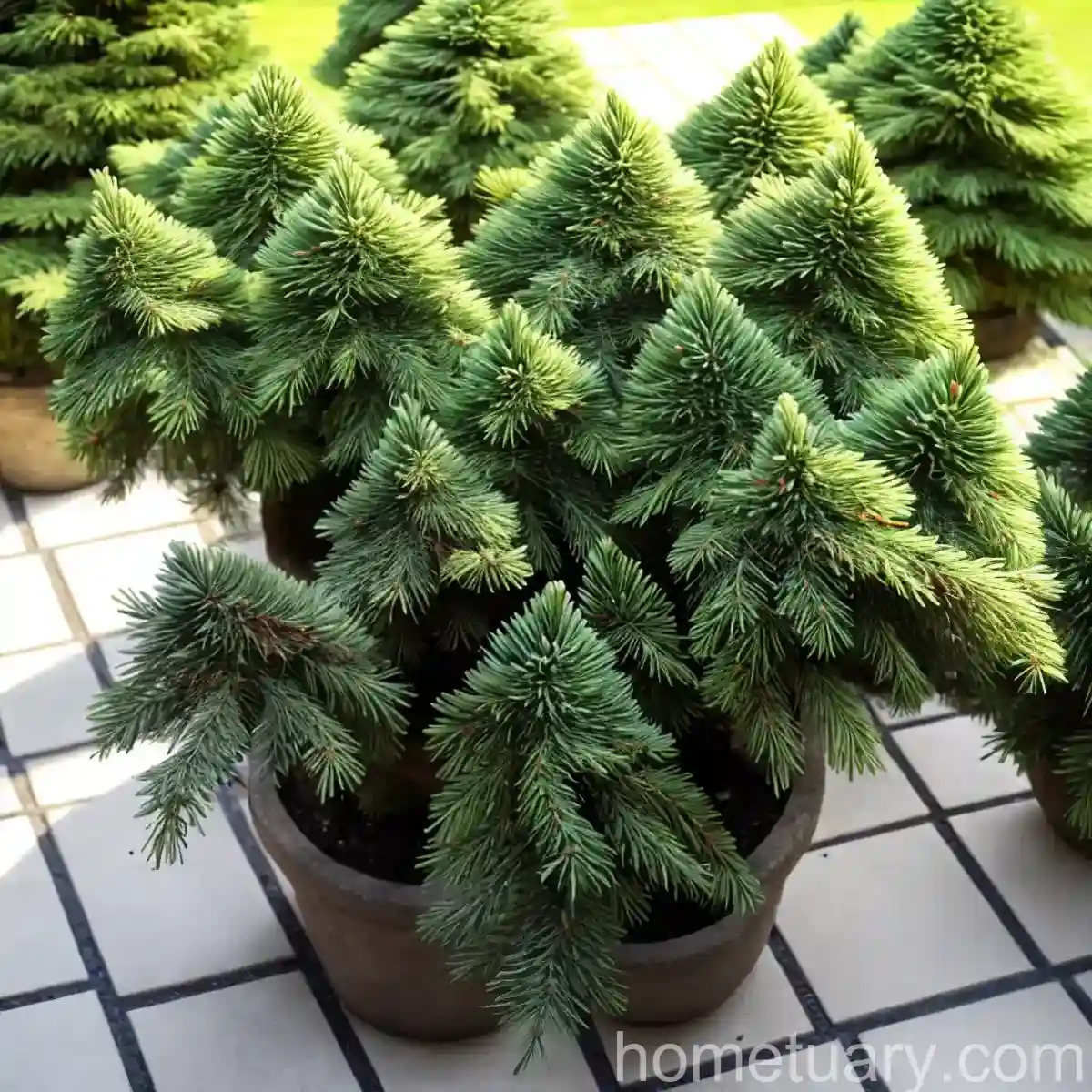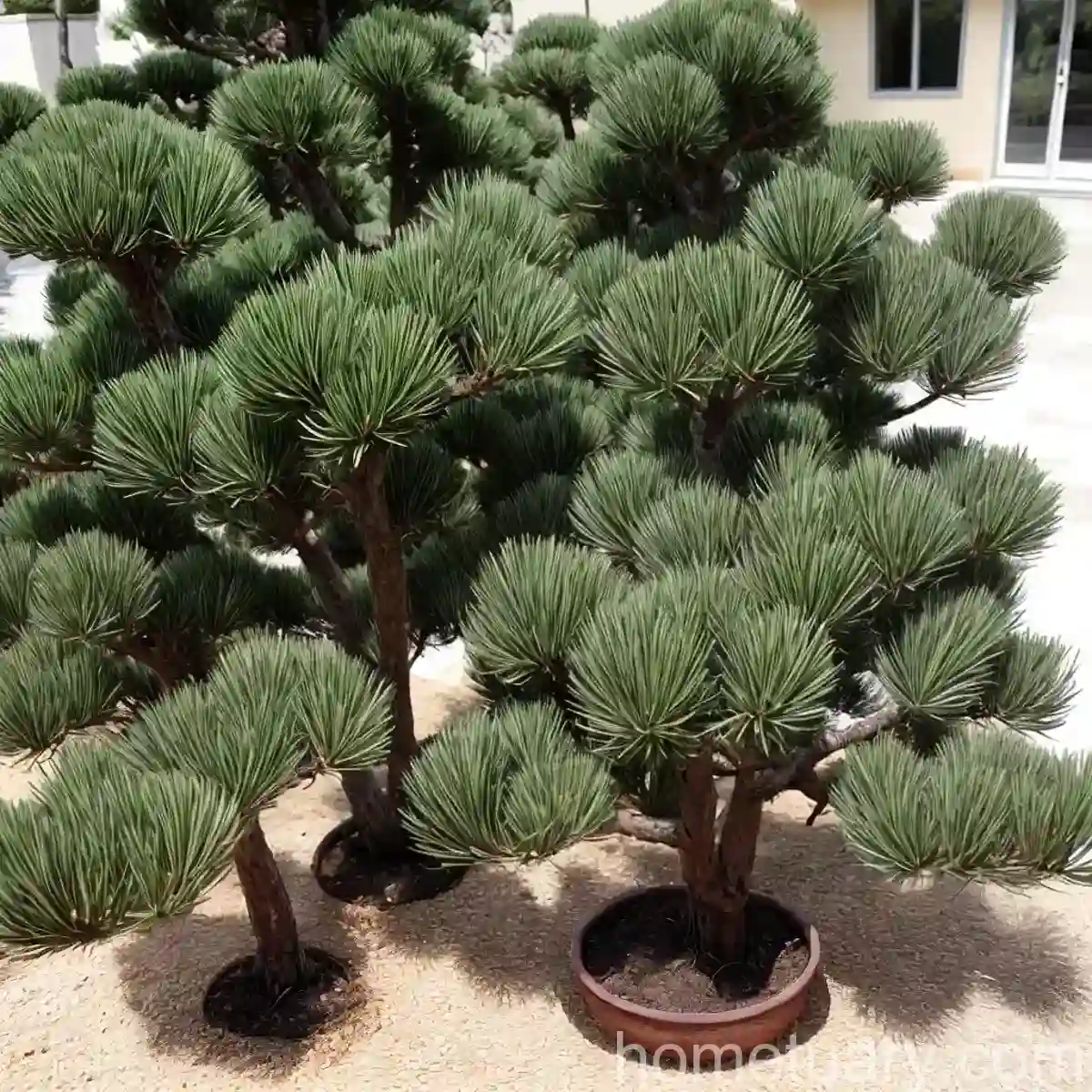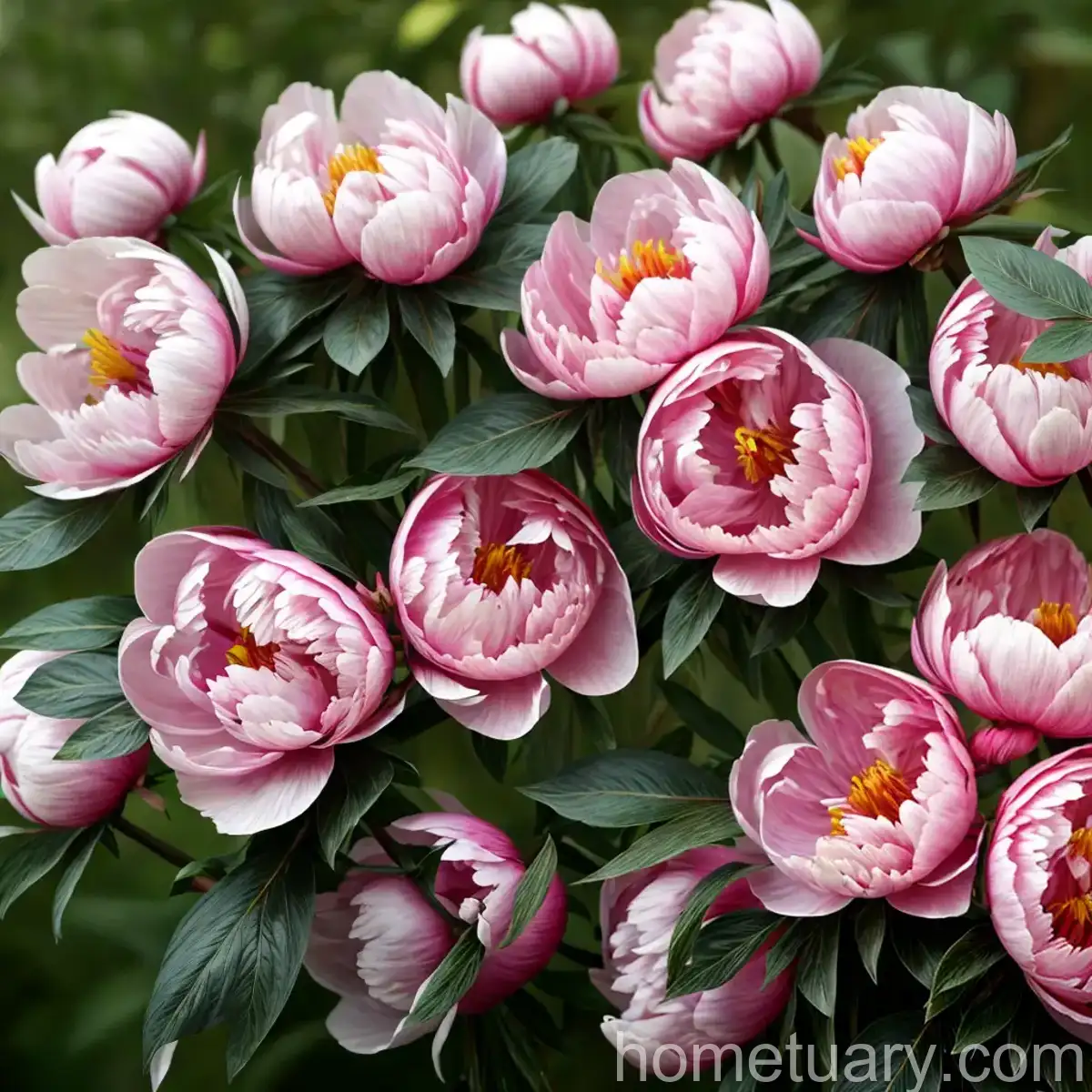Bosnian Pine (Pinus heldreichii): A Comprehensive Guide
As plant scientists, we are always looking for diverse and fascinating plant species that contribute to the ecological balance and offer various benefits. The Bosnian pine, scientifically known as Pinus heldreichii, is one such species that holds immense ecological, cultural, and medicinal value. This comprehensive guide will delve into the characteristics, cultivation, uses, ecological significance, and conservation efforts related to the Bosnian pine.
What is the Bosnian Pine (Pinus heldreichii)?
The Bosnian pine (Pinus heldreichii) is a slow-growing, hardy evergreen coniferous tree species that belongs to the Pinaceae family. This unique pine species is native to the Dinaric Alps and the Balkan Peninsula, where it thrives in high-altitude and mountainous regions. The tree can reach heights of up to 25 meters and is characterized by its long, dark green needles and sturdy, pyramid-shaped form.

Bosnian Pine Characteristics
The Bosnian pine exhibits several distinctive characteristics that set it apart from other pine species:
- Longevity: Bosnian pines are known for their exceptional longevity, with some trees living for over 350 years.
- Needles: The needles of the Bosnian pine are long, dark green, and formed in pairs, typically measuring around 8-16 cm in length.
- Cone Structure: The cones of Pinus heldreichii are small, measuring 4-7 cm in length, and have a unique symmetrical shape with a thick, woody structure.
Key Takeaways – Bosnian Pine (Pinus heldreichii)
Let’s further explore the various aspects associated with the cultivation, uses, and ecological significance of the Bosnian pine.
Culture
The cultural significance of the Bosnian pine extends beyond its ecological role. It holds a special place in the traditions and folklore of the Balkan region, where it is often revered as a symbol of strength, resilience, and longevity. The wood of Pinus heldreichii has been historically used in traditional crafts and construction, further embedding its cultural significance in the region.
Uses
Bosnian pine serves a diverse range of uses, making it a valuable species for both ecological restoration and human applications. Some of the primary uses of Pinus heldreichii include:
- Timber: The wood of the Bosnian pine is highly valued for its strength and durability, making it suitable for construction, furniture making, and carpentry.
- Medicinal Purposes: Traditional medicine systems in the Balkans utilize various parts of Pinus heldreichii for their medicinal properties, including the use of resin and extracts for treating respiratory ailments and inflammatory conditions.
- Ecological Restoration: Due to its resilience and ability to thrive in challenging mountainous environments, Bosnian pine plays a crucial role in ecological restoration and reforestation efforts in the region.
Water
The Bosnian pine is well-adapted to survive in relatively dry and rocky soil conditions, making it moderately tolerant to drought. However, proper watering is essential, especially during the establishment phase of young trees. Once established, the mature Bosnian pine exhibits good drought tolerance due to its deep root system and ability to access water from lower soil layers.
Sunlight
Pinus heldreichii thrives in full sun to partial shade, making it well-suited for a range of planting locations. While it can tolerate partial shade, optimal growth and needle density are achieved when the tree receives ample sunlight.
Fertilizer
The Bosnian pine, like many coniferous species, does not have high fertilizer requirements. However, in nutrient-poor soils, the application of a balanced slow-release fertilizer can support the tree’s growth, especially during the initial years after planting. Care should be taken to avoid over-fertilization, as this can lead to excessive foliage growth and compromise the tree’s natural form.
Soil
The Bosnian pine thrives in well-drained, slightly acidic to neutral soils. It exhibits good tolerance to rocky and shallow soils, making it well-suited for mountainous and limestone-rich terrains. Additionally, Pinus heldreichii is well-adapted to soils with low fertility, which is characteristic of many high-altitude habitats in its native range.
Pruning
Minimal pruning is required for the Bosnian pine, as it naturally forms a well-balanced and symmetrical crown. Pruning activities, if necessary, are typically limited to the removal of dead or damaged branches to maintain the tree’s health and aesthetics. Care should be taken to avoid excessive pruning, as this can interfere with the natural shape and growth pattern of the tree.
Propagation
Bosnian pine can be propagated through both seed and vegetative propagation methods. The collection and sowing of seeds are commonly employed for large-scale reforestation efforts. Additionally, vegetative propagation techniques such as hardwood cuttings and grafting can be utilized to propagate specific cultivars or selected trees with desirable traits.
Container Popularity
While Bosnian pine is primarily grown in natural landscapes and reforestation projects, it is also gaining popularity as a container plant for ornamental and landscape use. The adaptability of Pinus heldreichii to container cultivation makes it a valuable choice for urban greening projects and smaller garden spaces.
Container Common Diseases
When grown in containers, Bosnian pine may be susceptible to common conifer diseases such as needle blight, root rot, and canker diseases. Careful monitoring of the tree’s health, appropriate watering practices, and ensuring proper soil drainage can help mitigate the risk of these diseases in container-grown specimens.
Disease Diagnosis
Diagnosing diseases in the Bosnian pine requires a thorough understanding of common conifer ailments, as well as specific pathogens and environmental factors that may impact the tree’s health. Visual inspection, coupled with laboratory analysis if necessary, can aid in accurately diagnosing and managing diseases affecting Pinus heldreichii.
Common Pests
The Bosnian pine is relatively resistant to pests and diseases compared to other conifer species. However, certain pests such as bark beetles, adelgids, and caterpillars may pose localized threats to the health of the tree. Regular monitoring and the implementation of integrated pest management strategies are crucial for maintaining the tree’s vitality and resilience.
Botanist’s Tips
- Native Range Preservation: Protecting the natural habitats and native range of Pinus heldreichii is essential for the conservation of this species. Efforts aimed at preserving and restoring its native ecosystems contribute to the long-term survival of the Bosnian pine.
- Ecological Landscaping: Incorporating Bosnian pine into ecological landscaping and reforestation projects can enhance biodiversity and support the restoration of degraded mountainous environments.
- Documentation and Research: Continued research and documentation of the ecological interactions, genetic diversity, and habitat requirements of Bosnian pine are critical for informed conservation and management strategies.
Fun Facts
- The Bosnian pine is considered a symbol of national and ecological importance in countries such as Bosnia and Herzegovina, where it is featured on coins and emblems.
- The resin of Pinus heldreichii has been traditionally used as an adhesive and sealant in woodworking and boat construction.
- Bosnian pine forests provide crucial habitat for diverse wildlife species, including birds, mammals, and insects, contributing to the overall ecological richness of mountain ecosystems.
External Resources
For further exploration of Bosnian pine cultivation, uses, and conservation, the following links provide valuable information and insights:
- “The Red List of Pinus heldreichii” – IUCN
- “Bosnian Pine – Pinus heldreichii” – USDA Forest Service
- “Bosnian Pine – Pinus heldreichii” – Alpine Garden Society
- “Bosnian Pine – Pinus heldreichii: Threatened Tree Species” – Plantlife
In conclusion, the Bosnian pine (Pinus heldreichii) stands as a remarkable species with ecological, cultural, and economic significance. As plant scientists and enthusiasts, our efforts in understanding, cultivating, and conserving this valuable tree contribute to the preservation of biodiversity and the sustainable management of forest ecosystems.
Through continued research, conservation initiatives, and responsible cultivation practices, we can ensure the continued presence of the Bosnian pine and its invaluable contributions to our natural world.
Remember, the Bosnian pine is not just a tree – it is a symbol of resilience, a provider of resources, and a cornerstone of diverse ecosystems. Let’s join hands in conserving and celebrating the remarkable attributes of Pinus heldreichii for generations to come.
Note: This comprehensive guide has been prepared based on current scientific knowledge and available resources. For specific cultivation and conservation recommendations, it is advisable to consult regional botanical experts and authoritative sources.





